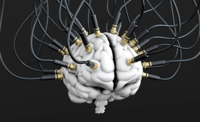
Lead Image © Maxim Basinski, 123RF.com
Artificial admin
Machine Brain
The innovation currently sweeping across the IT industry is artificial intelligence (AI). Language models such as ChatGPT, which can be trained with existing materials, have established themselves as a factor in our daily lives. However, language models are only a small part of AI and not exactly the most obvious candidates when it comes to integrating artificial intelligence into everyday IT processes. Instead, industry service Gartner listed better suited candidates a while back, while coining the term "AIOps" (artificial intelligence for IT).
After experiencing the pronouncement of DevOps, ChatOps, SecOps – and now AIOps – you might be frustrated by yet more stuff that mainly comes from the vendors' marketing departments and doesn't really address actual needs in the daily IT grind. What's more, when it comes to artificial intelligence, people are always worried about whether their jobs are at risk.
How real is this danger? Will computers soon take over the data center and completely replace admins, or has Gartner once again focused on a niche topic to grab attention? "No" to both questions; read on to find out why.
What's All the Fuss?
The one genuine problem in the context of discussions about AIOps is the vagueness of the term "AI." Like the cloud, AI has become part of the everyday lexicon, but it is used in a fuzzy way. Any process in which a computer is involved and that is not based on direct human input is already considered AI.
Gartner's understanding of AIOps, if you browse through the industry analyst's texts and flyers, is integrating artificial intelligence tools into everyday administrative work, and even partially replacing human skills in operations with AI-supported automation [1].
Some administrators might be surprised. For many years, monitoring systems such as
...Buy this article as PDF
(incl. VAT)
Buy ADMIN Magazine
Subscribe to our ADMIN Newsletters
Subscribe to our Linux Newsletters
Find Linux and Open Source Jobs
Most Popular
Support Our Work
ADMIN content is made possible with support from readers like you. Please consider contributing when you've found an article to be beneficial.





